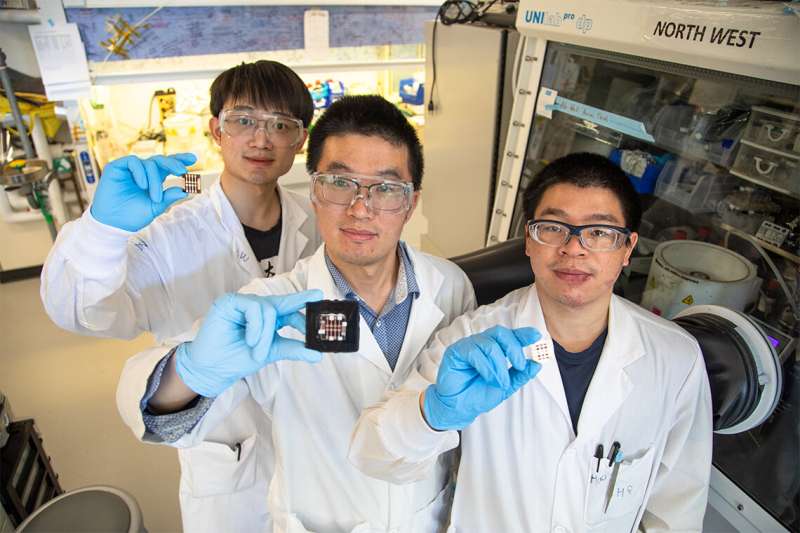Researchers have developed a triple-junction perovskite solar cell with record efficiency to lower the manufacturing cost of traditional silicon solar cells.

Solar cells require a single, ultra-pure silicon wafer, which necessitates substantial energy consumption during production. The conventional solar cells used in a multilayer design encounters challenges such as low efficiency and reduced durability.
A team of researchers from the University of Toronto has created a high-efficiency perovskite solar cell by overcoming traditional solar cell design limits. The prototype signifies a noteworthy progression and has the potential to serve as a low-cost alternative to silicon solar cells. Perovskites allow the stacking of multiple light-absorbing layers, including on traditional silicon cells, besides lowering manufacturing costs. Perovskite solar cells use polycrystalline films coated with low-cost techniques akin to printing.
Perovskite crystals in the films can be varied to absorb different wavelengths, allowing efficient use of the solar spectrum, unlike silicon which absorbs fixed wavelengths. Multi-layered cells aim to absorb high-frequency, short-wavelength photons from the violet end of the spectrum using a top layer with wide-band gap perovskites. Light-induced phase separation challenges occur in the top layer, where high-energy photons are absorbed, while subsequent layers absorb the medium and longer wavelengths. The team of researchers used ABX3 perovskite material containing cesium, lead, tin, iodine, bromine, and organic molecules, with a top layer composed of bromine and iodine-rich mixed halide perovskites.
Light-induced phase separation in mixed perovskites separates bromine-rich phases from iodine-rich phases due to bombardment by high-frequency photons. As a consequence, defects increase, and overall performance decreases. The research team used computer models to propose solutions to the problem: an all-inorganic perovskite structure by eliminating organic molecules and introducing rubidium. The introduction of rubidium suppresses the light-induced phase separation issue. Mixed inorganic rubidium/cesium perovskites exhibit superior light stability compared to other perovskite materials, such as cesium-based inorganic and widely-used organic-inorganic hybrid perovskites with similar band gaps. Using this information, the team constructed a triple-junction cell with this composition, achieving 24.3 percent efficiency and 3.21 volts open-circuit voltage. This new design maintained 80 percent of its initial efficiency after 420 hours of operation.
Researchers believe that perovskite solar cells require further performance enhancements to compete with silicon commercially, but the study reveals a promising direction.
Reference : Zaiwei Wang et al, Suppressed phase segregation for triple-junction perovskite solar cells, Nature (2023). DOI: 10.1038/s41586-023-06006-7







